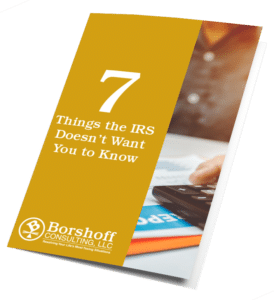If you are looking to reduce your tax bill, you may want to see if you qualify for a refundable or partially refundable tax credit. Refundable tax credits can be worth more than what you owe in taxes, meaning you may be able to have a tax refund or an increase in the amount of tax refund you are owed from the IRS.
A tax refund is an amount due to you from the government, so that is something big to go for if you are eligible! Be cautious when you try to claim one because you do have to meet many requirements and qualifications. If you don’t understand them, be sure to get the help of a tax professional who is well qualified to advise you on the right way to file.
Many tax consultants permit you to have a free tax consultation, so they can best understand your particular tax situation. When going to a tax consultation, be sure you bring all forms and schedules along with any backup documentation that is required for you to claim the tax credits that you believe you are eligible for.
This article will explain what tax credits are, the difference between tax credits and tax deductions, what refundable tax credits are, examples of the different types of tax credits, and a brief summary of the more popular refundable tax credits.
What is a tax credit?
A tax credit is a credit that reduces the amount of tax liability you have on your tax return, provided you do qualify for the tax credit. In other words, a tax credit is a dollar for dollar reduction on the amount of tax you would have had to pay if you were unable to take the tax credit. A tax credit can be refundable, partially refundable, or nonrefundable.
What is the difference between tax credits and tax deductions?
Tax credits directly reduce the amount of your tax bill, possibly even resulting in a tax refund, depending on the amount of your tax liability. Tax deductions, on the other hand, reduce the amount of taxable income that you pay taxes from. In other words, tax dedications indirectly reduce the amount of tax liability you owe to the IRS.
What is a refundable tax credit?
A refundable credit is a tax credit that possibly will result in a tax refund, provided it already covers the amount of tax liability you have on your annual tax return.
A nonrefundable tax credit can reduce or eliminate the amount of tax you owe to the IRS, but it cannot allow you to have a tax refund based on the amount of the non-refundable tax credit.
If you have a refundable credit worth $1,000, and your tax bill is $500, you would be able to take the refundable portion of $500 ($1,000 tax credit less the amount of your tax bill of $500) as a tax refund.
If you have a partially refundable credit worth $1,000, but the refundable portion was only $500, and your tax bill was zero, you would only be able to take $500 as a tax refund. You wouldn’t owe anything, and you would be able to get a tax refund, but not for the full amount of the tax credit.
Normally, with a refundable tax credit, you’d see a tax refund of $1,000 if you had $0 as your tax liability, but since this is a partially refundable credit that allows only $500 to be given as a tax refund, you would only get $500 ($1,000 tax credit less $0 tax liability leaves you with $1,000, but only $500 is refundable).
For a nonrefundable credit, you could only use the tax credit as a means to reduce your tax liability.
So, if you had a nonrefundable tax credit worth $1,000 and your tax liability was $500, you would only be able to use the credit amount of $500, which would go towards your tax bill ($1,000 tax credit less $500 worth of tax liability, leaves you with $500, but it’s not refundable, so you wouldn’t get to use that $500).
As you can see from those examples, the type of tax credit makes a world of difference. With a refundable tax credit, you may be able to see a tax refund and have zero tax liability on your tax return. A partially refundable tax credit may have the same result, but it depends on the amount that is refundable. A nonrefundable tax credit only reduces your tax bill.
How do refundable credits work on your taxes?
As the examples above illustrate, tax credits may result in a tax refund if they are refundable or partially refundable and provided the refundable portion is more than your tax bill. The amount of your tax bill will be determined by the tax return you file each year.
Typically, you have to fill out additional forms or schedules, which you attach to your annual tax return, usually IRS Form 1040 or IRS Form 1040-NR. It can get quite complicated when trying to claim multiple tax credits for any given tax year. For this reason, it’s a good idea to enlist the help of a tax accountant, CPA, or other qualified tax professionals.
What are the most popular refundable tax credits?
The American Opportunity Tax Credit (AOTC) is a partially refundable tax credit for qualified education expenses, including books, supplies, school fees, and tuition. It does not cover health insurance, living costs, or transportation costs.
The Additional Child Tax Credit is a refundable tax credit for a qualifying child who did not permit the taxpayer to claim the Child Tax Credit.
The Child Tax Credit is a partially refundable tax credit for taxpayers with qualifying children. The tax credit is worth up to $2,000 per child with the refundable portion worth up to $1,400 for the tax year, but the eligible amount does depend on your income level.
The Earned Income Tax Credit (EITC) is a refundable tax credit created for taxpayers with low to moderate-income levels. The EITC is worth up to $6,660 for the tax year 2020.
With one qualifying child, you may receive up to $3,584. With two children, you may receive up to $5,920. For families with three or more children, the maximum amount of the tax credit is $6,660.
Conclusion
Refundable tax credits are, clearly, very beneficial for taxpayers who qualify because they allow taxpayers to not only reduce their tax liability but also may result in a tax refund.
Tax credits can be quite complicated to understand, compute, and file. For this reason, you may want to get the help of a tax consultant. A qualified tax consultant can explain the tax credits to you with all details, showing you why or why you are not eligible for a particular tax credit. They can also calculate whether the tax credit is beneficial to you or not.
You may discover you are better off taking certain tax deductions. It’s a good idea to calculate all tax benefits when figuring your taxes to see which are the best to take. However, do not try to go for a tax credit or tax deduction that you are not qualified for.
Because many people fraudulently or incorrectly go for many tax credits, hoping for a large tax refund or a reduced tax bill, the IRS watches for taxpayers who claim many credits. This could result in a tax audit, and if you are doing things you aren’t qualified for, you could end up owing the government money that you did not anticipate, and no one wants an unexpected tax bill.
If you are concerned about or expecting a tax audit, reach out to us, and we’ll gladly represent you in an audit. We are fully qualified and have the experience to help you before, after, and during an audit! If we are unable to help you with the many tax and business services we offer, we’ll find someone who can!
Please contact us today for more information on the many services we offer, including tax audit representation, tax consulting, tax preparations, and business consulting for small to medium-sized businesses. Reach out today for a free consultation, and we will help you with your tax or business concerns. You can trust Indiana’s tax expert.





